Circuit Modelling of Broadband Antenna Using Vector Fitting and Foster Form Approaches for IoT Applications
Abstract
:1. Introduction
2. Broadband Antenna Equivalent Circuit Methodologies
2.1. Stage I: Equivalent Circuit Model via Foster Canonical Form
2.2. Stage II: Equivalent Circuit Model via Vector-Fitting Approach
2.2.1. Vector-Fitting Approximation Principle
2.2.2. Antenna Modeling Using Vector Fitting
2.3. Equivalent Circuit Based on Antenna Geometry and Substrate Characteristics
2.4. Prototype, Measurement and Comparison
3. Time-Domain Analysis Based on Equivalent Circuit
3.1. Pulse Generation Technique
3.2. Antenna Equivalent Circuit Output Results
4. Conclusions
Author Contributions
Funding
Conflicts of Interest
References
- Badawy, M.M.; Malhat, H.A.E.-A.; Zainud-Deen, S.H.; Awadalla, K.H. A Simple Equivalent Circuit Model for Plasma Dipole Antenna. IEEE Trans. Plasma Sci. 2015, 43, 4092–4098. [Google Scholar] [CrossRef]
- Garg, M.K. LC Model of Corner Arc Slotted Antenna for C, X and Ku Band Applications. AKGEC Int. J. Technol. 2018, 9, 53–55. [Google Scholar]
- Caratelli, D.; Haider, N.; Yarovoy, A. Analytically based extraction of Foster-like frequency-independent antenna equivalent circuits. In Proceedings of the URSI Commission B 2013 International Symposium on Electromagnetic Theory EMTS 2013, Hiroshima, Japan, 20–23 May 2013; pp. 506–509. [Google Scholar]
- Ferchichi, A.; Azizi, M.K.; Ali, G. Analysis of a Square Parasitic Antenna by Using Lumped Elements. Int. J. Electron. Telecommun. 2012, 58, 279–283. [Google Scholar] [CrossRef] [Green Version]
- Faouri, Y.S.; Ahmad, S.; Parchin, N.O.; See, C.H.; Abd-Alhameed, R. A Novel Meander Bowtie-Shaped Antenna with Multi-Resonant and Rejection Bands for Modern 5G Communications. Electronics 2022, 11, 821. [Google Scholar] [CrossRef]
- Yeap, K.H.; Meister, T.; Oh, Z.X.; Nisar, H.; Zhang, Z.; Liu, J.; Su, J.; Song, J.; Gao, Y.; Peng, W.; et al. Circuit Modelling Methodology for Dual-band Planar Antennas. Appl. Comput. Electromagn. Soc. 2021, 36, 1112–1115. [Google Scholar] [CrossRef]
- Tuovinen, T.; Berg, M. Impedance Dependency on Planar Broadband Dipole Dimensions: An Examination with Antenna Equivalent Circuits. Prog. Electromagn. Res. 2014, 144, 249–260. [Google Scholar] [CrossRef] [Green Version]
- Benkhadda, O.; Saih, M.; Chaji, K.; Ahmad, S.; Reha, A. A Compact Dual-Band CPW-Fed Slot Monopole Antenna for WiFi, WLAN and WiMAX Applications. Arab. J. Sci. Eng. 2022. [Google Scholar] [CrossRef]
- Moulay, M.; Abri, M.; Badaoui, H.A. Quad-Band Bowtie Antenna Design for Wireless Communication System Using an Accurate Equivalent Circuit Model. Int. J. Microw. Sci. Technol. 2015, 2015, 1–7. [Google Scholar] [CrossRef]
- Palud, S.; Colombel, F.; Himdi, M.; Le Meins, C. Circuit Modeling of a Small Broadband Conical Antenna. IEEE Antennas Wirel. Propag. Lett. 2009, 8, 96–99. [Google Scholar] [CrossRef]
- Ali, M.M.M.; Saad, A.A.R.; Khaled, E.E.M. Implementation and justification of a triple frequency-notched UWB proximity-fed antenna with shunt stubs. Microw. Opt. Technol. Lett. 2014, 56, 646–654. [Google Scholar] [CrossRef]
- Moradikordalivand, A.; Rahman, T.A.; Ebrahimi, S.; Hakimi, S. An Equivalent Circuit Model for Broadband Modified Rectangular Microstrip-Fed Monopole Antenna. Wirel. Pers. Commun. 2014, 77, 1363–1375. [Google Scholar] [CrossRef]
- Yousaf, J.; Jung, H.; Kim, K.; Nah, W. Design, analysis, and equivalent circuit modeling of dual band PIFA using a stub for performance enhancement. J. Electromagn. Eng. Sci. 2016, 16, 169–181. [Google Scholar] [CrossRef] [Green Version]
- Ripin, N.; Sulaiman, A.A.; Rashid, N.E.A. An Equivalent Circuit Model of Miniature Double E-Shaped Meander Line Printed Monopole Antenna. J. Telecommun. Electron. Comput. Eng. 2018, 10, 59–63. [Google Scholar]
- Akrou, L.; Aghzout, O.; da Silva, H.J.A.; Essaaidi, M. Design of Compact Multiband Antenna with Band-Rejection Features for Mobile Broadband Satellite Communications. Prog. Electromagn. Res. C 2016, 68, 95–106. [Google Scholar] [CrossRef] [Green Version]
- Ansarizadeh, M.; Ghorbani, A.; Abd-Alhameed, R.A. An Approach to Equivalent Circuit Modeling of Rectangular Microstrip Antennas. Prog. Electromagn. Res. B 2008, 8, 77–86. [Google Scholar] [CrossRef] [Green Version]
- Antonini, G. Spice equivalent circuits of frequency-domain responses. IEEE Trans. Electromagn. Compat. 2003, 45, 502–512. [Google Scholar] [CrossRef]
- Tan, W. Modeling and Design of Passive Planar Components for EMI Filters. Ph.D. Dissertation, École Centrale de Lille, Lille, France, 2012. [Google Scholar]
- Kim, Y.; Ling, H. Equivalent circuit modeling of broadband antennas using a rational function approximation. Microw. Opt. Technol. Lett. 2006, 48, 950–953. [Google Scholar] [CrossRef]
- Sharma, M.; Awasthi, Y.K.; Singh, H. Compact multiband planar monopole antenna for Bluetooth, LTE, and reconfigurable UWB applications including X-band and Ku-band wireless communications. Int. J. RF Microw. Comput. Eng. 2019, 29, e21668. [Google Scholar] [CrossRef]
- Duroc, Y.; Vuong, T.-P.; Tedjini, S. A Time/Frequency Model of Ultrawideband Antennas. IEEE Trans. Antennas Propag. 2007, 55, 2342–2350. [Google Scholar] [CrossRef]
- Wang, Y.; Li, J.; Ran, L.-X. An Equivalent Circuit Modeling Method for Ultra-Wideband Antennas. Prog. Electromagn. Res. 2008, 82, 433–445. [Google Scholar] [CrossRef] [Green Version]
- Saad, A.A.R.; Ali, M.; Khaled, E.E.M. An integrated 3G/Bluetooth and UWB antenna with a band-notched feature. J. Electromagn. Waves Appl. 2013, 27, 2430–2441. [Google Scholar] [CrossRef]
- Tuovinen, T.; Berg, M.; Iinatti, J. Analysis of the Impedance Behaviour for Broadband Dipoles in Proximity of a Body Tissue: Approach by Using Antenna Equivalent Circuits. Prog. Electromagn. Res. B 2014, 59, 135–150. [Google Scholar] [CrossRef]
- Malekpoor, H.; Jam, S. Analysis on bandwidth enhancement of compact probe-fed patch antenna with equivalent transmission line model. IET Microw. Antennas Propag. 2015, 9, 1136–1143. [Google Scholar] [CrossRef]
- Benouakta, S.; Koley, S.; Hutu, F.; Duroc, Y. Considerations on the Equivalent Electric Models of a UHF RFID Helical Antenna Yarn. In Proceedings of the 2019 International Symposium on Signals, Circuits and Systems (ISSCS), Iasi, Romania, 11–12 July 2019; pp. 1–4. [Google Scholar] [CrossRef] [Green Version]
- Pordanjani, I.R.; Chung, C.Y.; Mazin, H.E.; Xu, W. A Method to Construct Equivalent Circuit Model from Frequency Responses with Guaranteed Passivity. IEEE Trans. Power Deliv. 2010, 26, 400–409. [Google Scholar] [CrossRef]
- Saad, A.A.R.; Salem, D.A.; Khaled, E.E.M. Band-notched UWB Annular Slot Antenna with Enhanced Bandwidth by using EBG Via Holes. Int. J. Commun. 2013, 7, 67–74. [Google Scholar]
- Singh, A.; Shet, K.; Prasad, D.; Pandey, A.K.; Aneesh, M. A Review: Circuit Theory of Microstrip Antennas for Dual-, Multi-, and Ultra-Widebands. In Modulation in Electronics and Telecommunications; Dekoulis, G., Ed.; IntechOpen: London, UK, 2020. [Google Scholar]
- Kim, Y.; Ling, H. Realisable rational function approximations for the equivalent circuit modelling of broadband antennas. IET Microw. Antennas Propag. 2007, 1, 1046–1054. [Google Scholar] [CrossRef]
- Wang, S.; Niknejad, A.; Brodersen, R. Circuit modeling methodology for UWB omnidirectional small antennas. IEEE J. Sel. Areas Commun. 2006, 24, 871–877. [Google Scholar] [CrossRef] [Green Version]
- Pandey, A. Practical Microstrip and Printed Antenna Design, 1st ed.; Artech House: Norwood, MA, USA, 2019; p. 443. [Google Scholar]
- Biswas, B.; Karmakar, A. Electrical equivalent circuit modelling of various fractal inspired UWB Antennas. Frequenz 2020, 75, 109–116. [Google Scholar] [CrossRef]
- Ez-Zaki, F.; Belahrach, H.; Ghammaz, A. Broadband microstrip antennas with Cantor set fractal slots for vehicular communications. Int. J. Microw. Wirel. Technol. 2020, 13, 295–308. [Google Scholar] [CrossRef]
- Mahanta, P.K.; Yamin, N.; Zadehgol, A. Passivity verification and enforcement-A review paper. Int. J. Numer. Model. Electron. Netw. Devices Fields 2017, 31, e2286. [Google Scholar] [CrossRef]
- Valizade, A.; Rezaei, P.; Orouji, A.A. A design of UWB reconfigurable pulse transmitter with pulse shape modulation. Microw. Opt. Technol. Lett. 2016, 58, 2221–2227. [Google Scholar] [CrossRef]
- Ma, T.-G.; Wu, C.-J.; Chou, C.-F. An Impulse-Radio-Based Ultrawideband RF Front-End Module with a New Multilayered Microwave Sampler. Prog. Electromagn. Res. 2008, 86, 1–18. [Google Scholar] [CrossRef]
- Protiva, P.; Mrkvica, J.; Macháč, J. A compact step recovery diode subnanosecond pulse generator. Microw. Opt. Technol. Lett. 2009, 52, 438–440. [Google Scholar] [CrossRef]
- Aristov, V. Mathematical Description of the Operation of a Step-Recovery-Diode-Based Pulse Generator Circuit. Autom. Control Comput. Sci. 2018, 52, 572–580. [Google Scholar] [CrossRef]
- Zhang, J.; Raisanen, A. A new model of step recovery diode for CAD. In Proceedings of 1995 IEEE MTT-S International Microwave Symposium, Orlando, FL, USA, 16–20 May 1995. [Google Scholar]








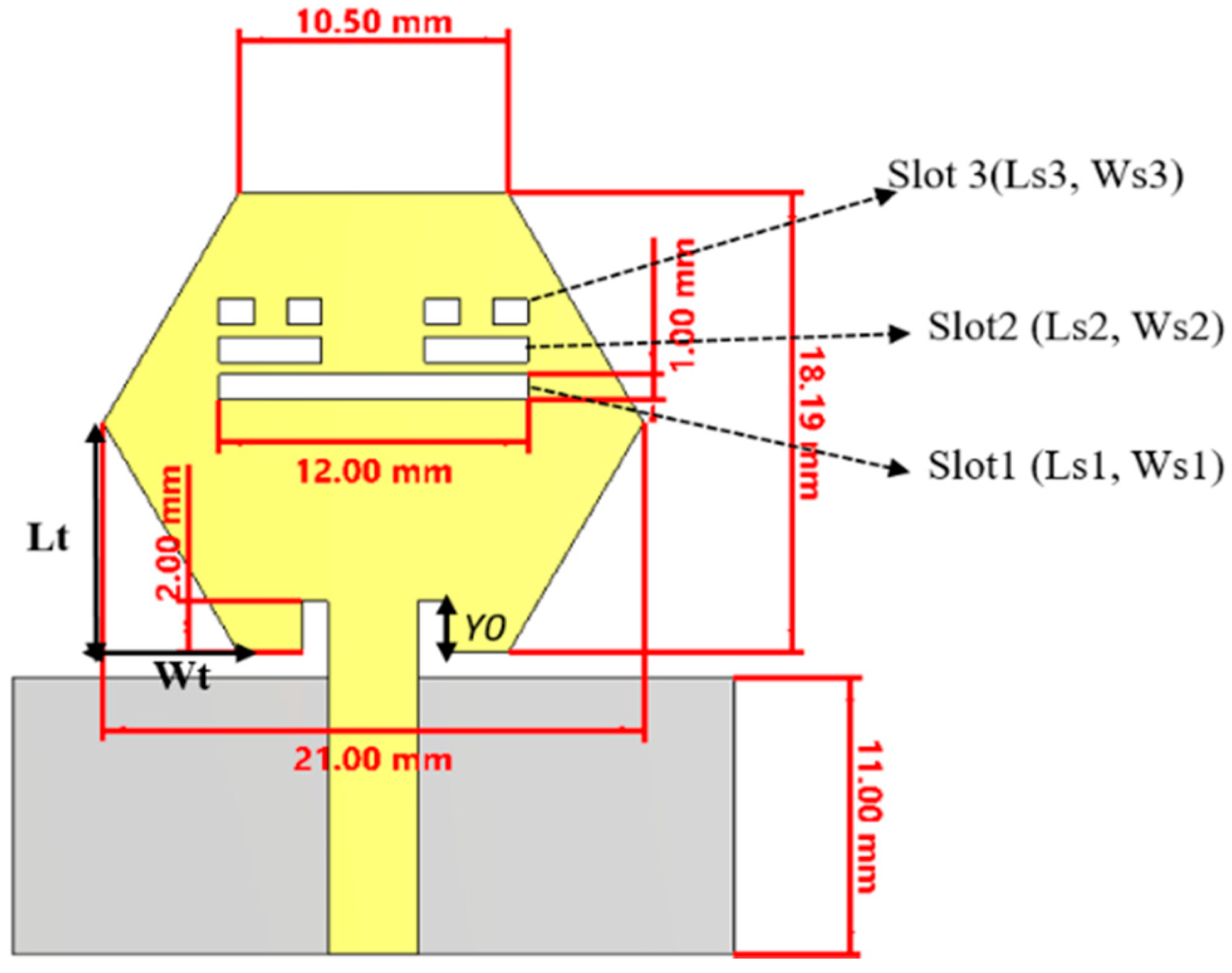
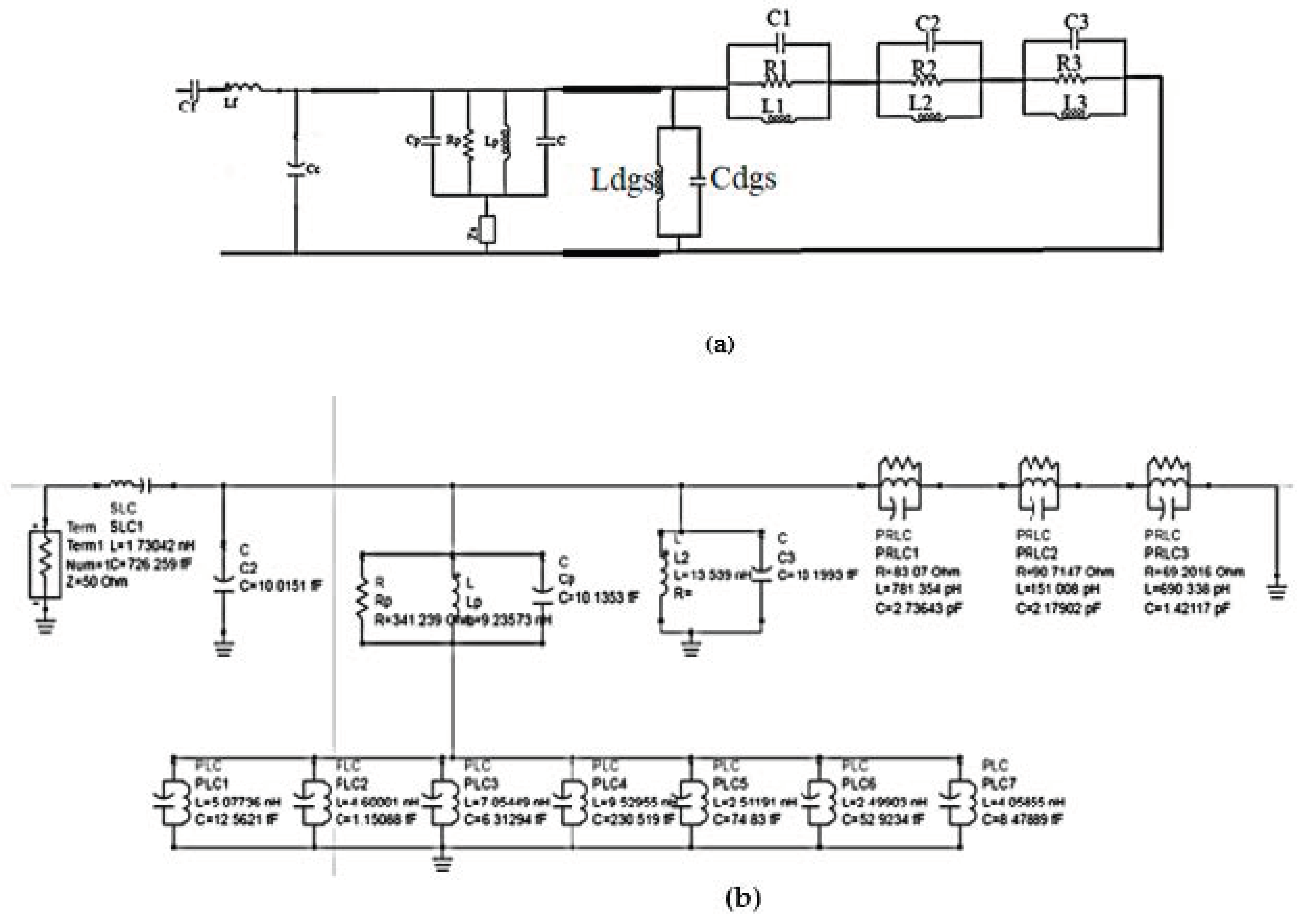
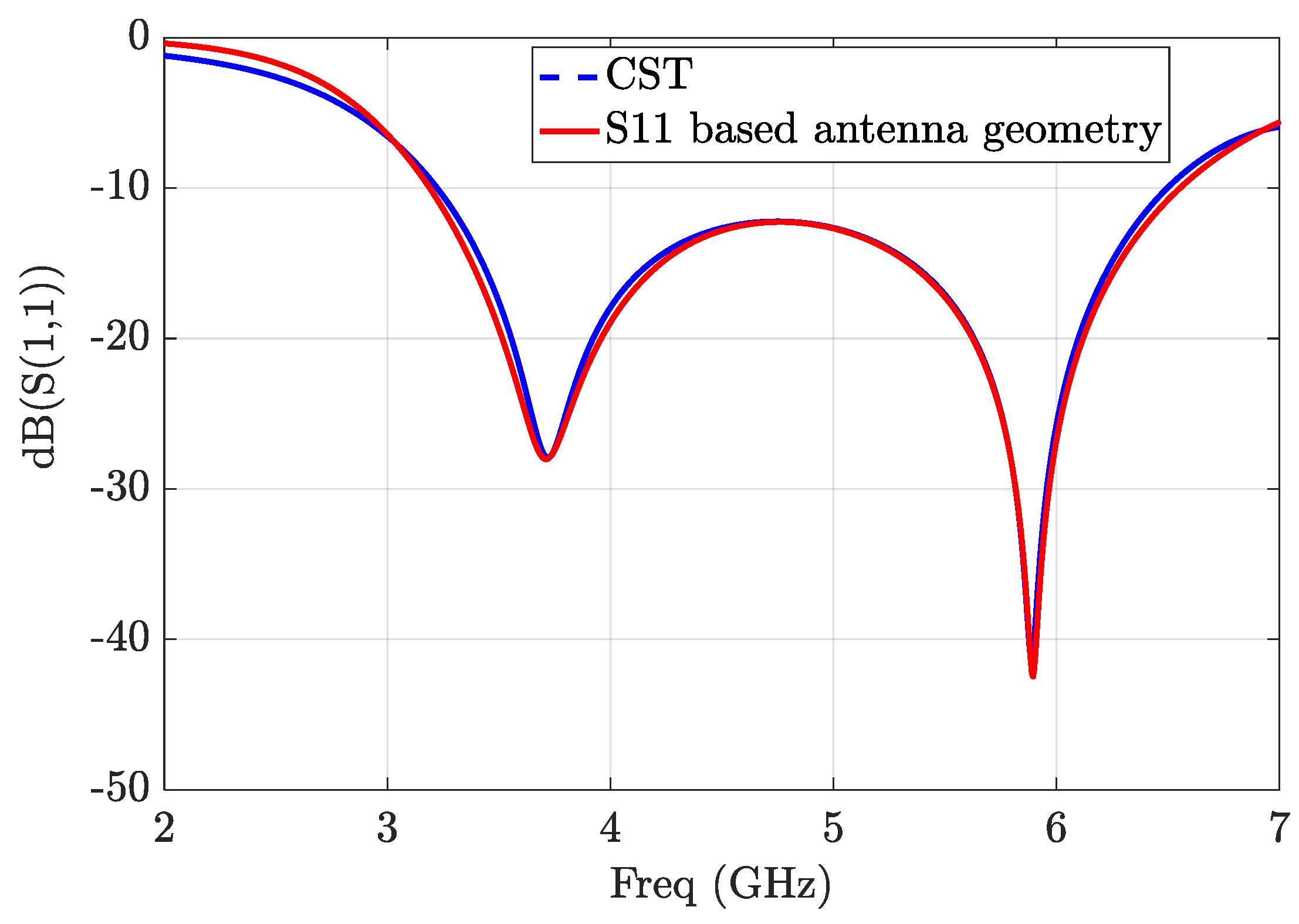
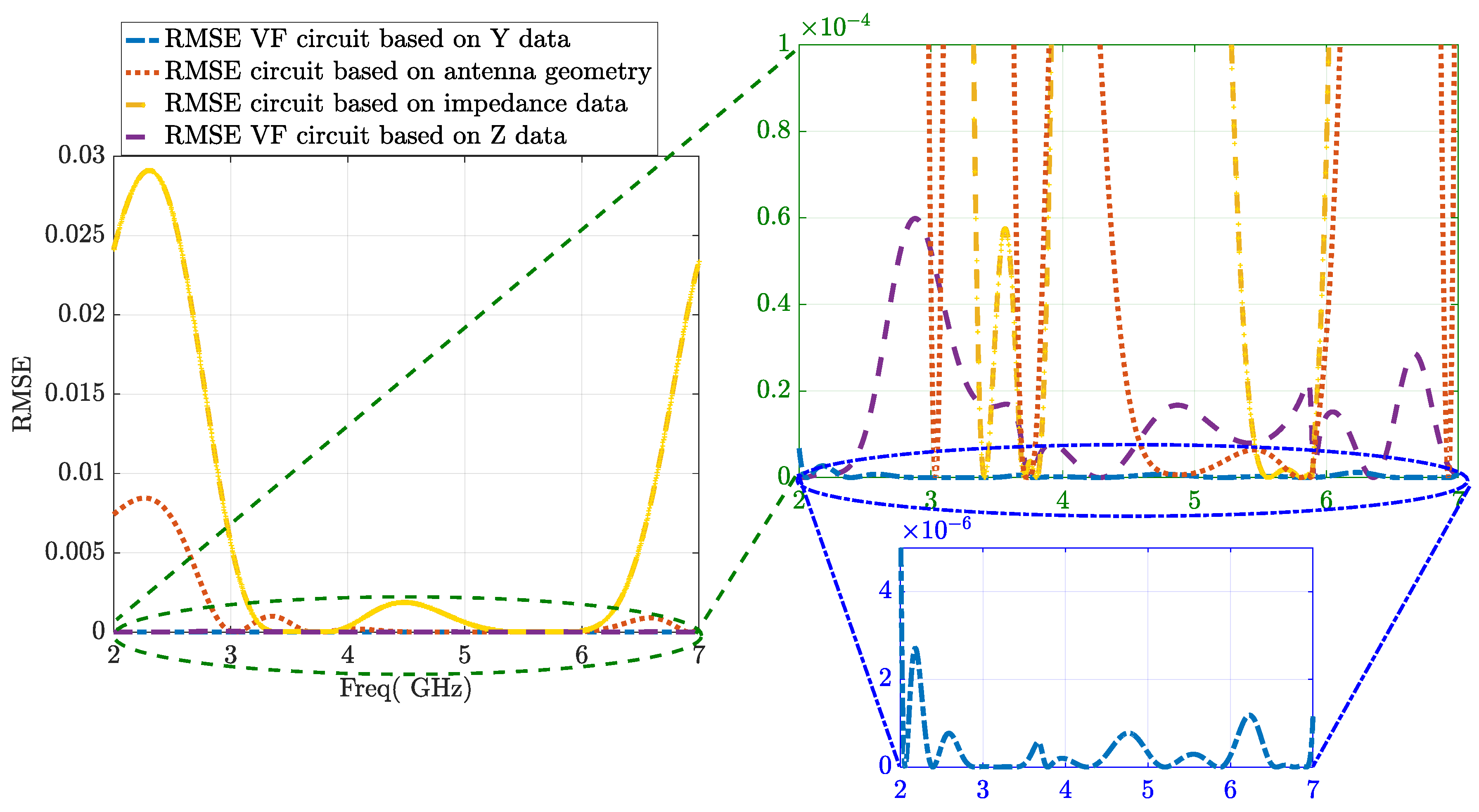
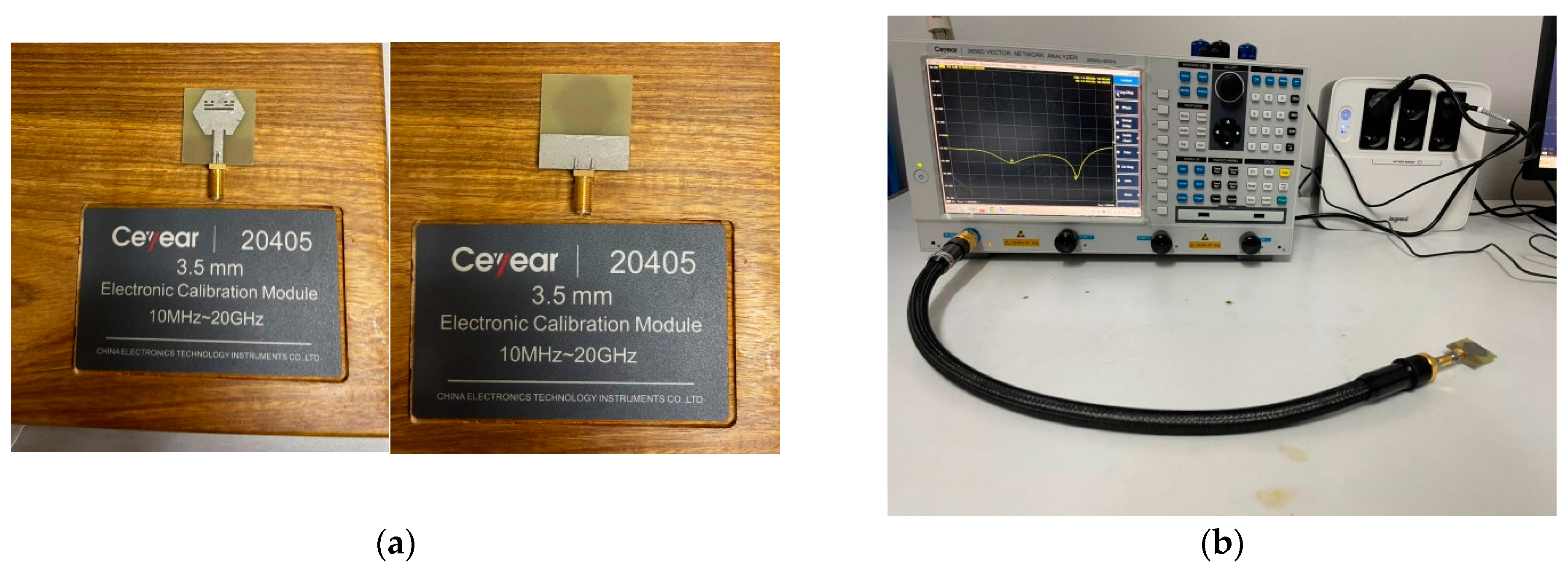

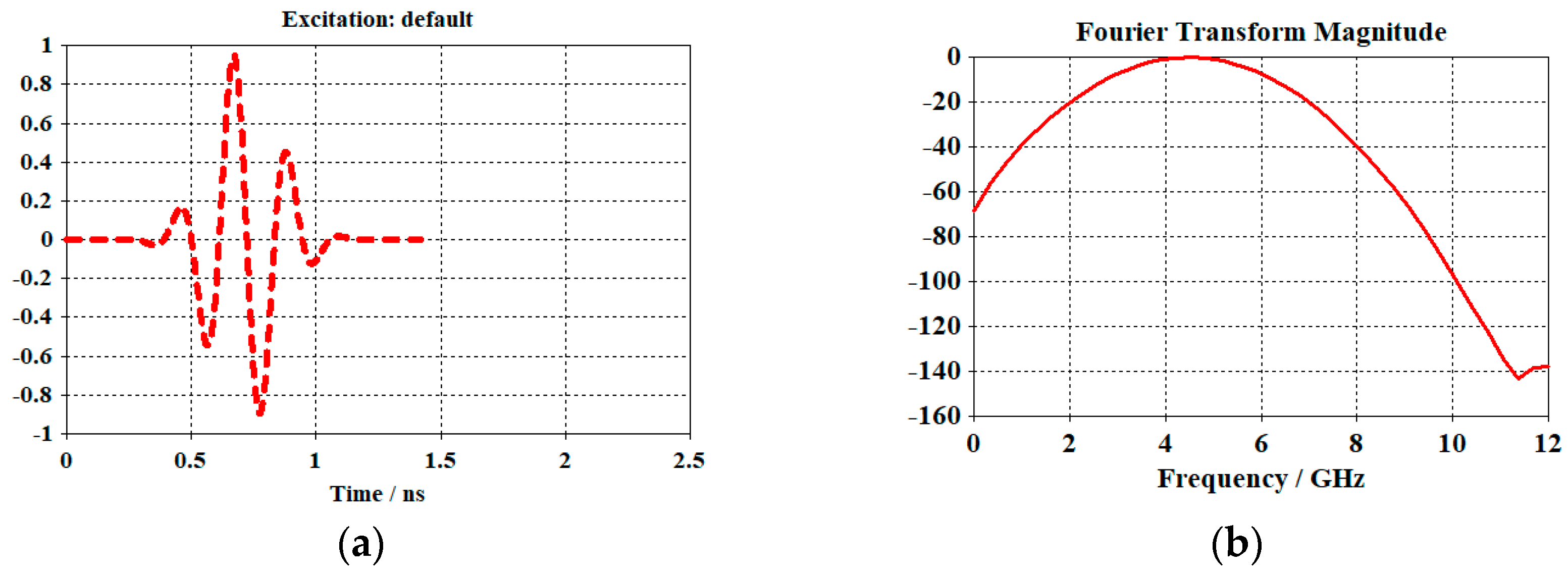

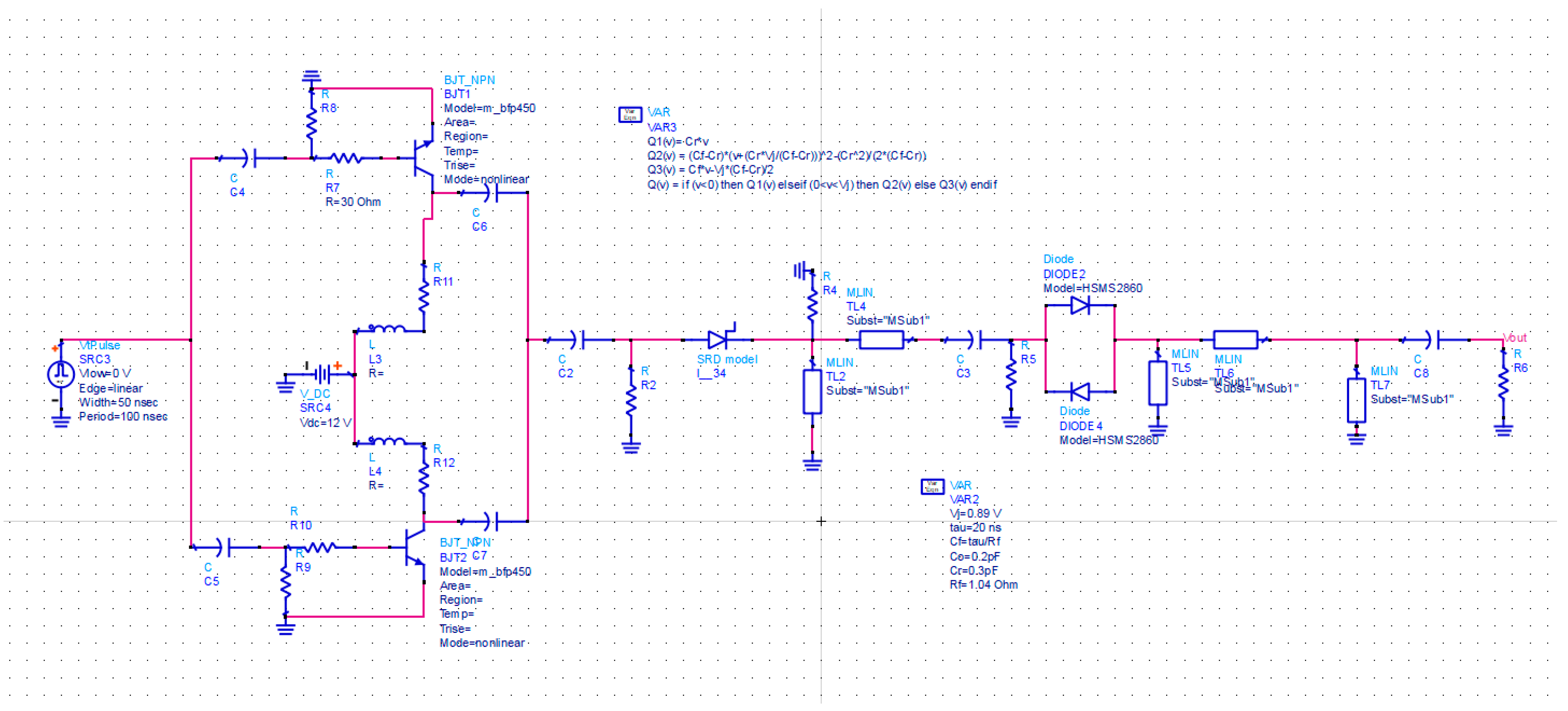

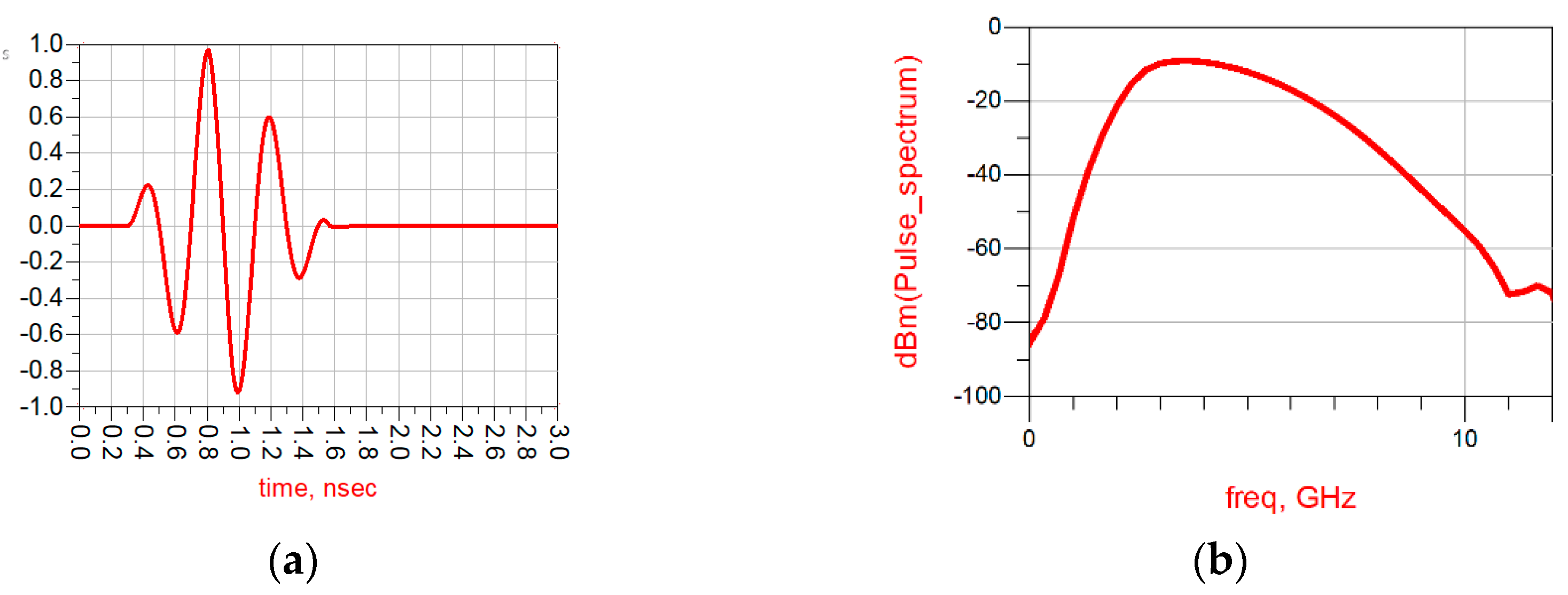

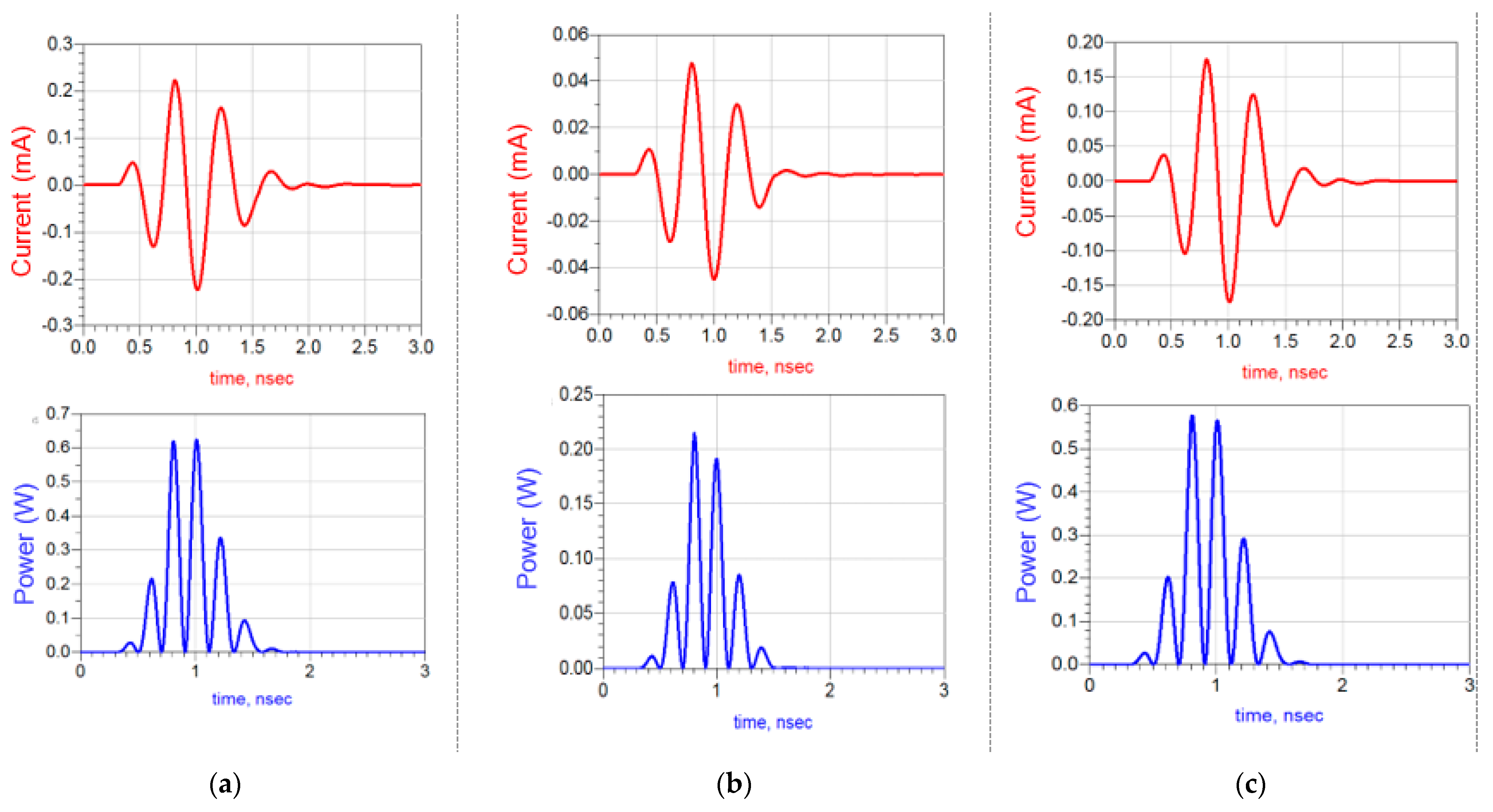
Publisher’s Note: MDPI stays neutral with regard to jurisdictional claims in published maps and institutional affiliations. |
© 2022 by the authors. Licensee MDPI, Basel, Switzerland. This article is an open access article distributed under the terms and conditions of the Creative Commons Attribution (CC BY) license (https://creativecommons.org/licenses/by/4.0/).
Share and Cite
Ez-zaki, F.; Belaid, K.A.; Ahmad, S.; Belahrach, H.; Ghammaz, A.; Al-Gburi, A.J.A.; Parchin, N.O. Circuit Modelling of Broadband Antenna Using Vector Fitting and Foster Form Approaches for IoT Applications. Electronics 2022, 11, 3724. https://doi.org/10.3390/electronics11223724
Ez-zaki F, Belaid KA, Ahmad S, Belahrach H, Ghammaz A, Al-Gburi AJA, Parchin NO. Circuit Modelling of Broadband Antenna Using Vector Fitting and Foster Form Approaches for IoT Applications. Electronics. 2022; 11(22):3724. https://doi.org/10.3390/electronics11223724
Chicago/Turabian StyleEz-zaki, Fatima, Khaoula Ait Belaid, Sarosh Ahmad, Hassan Belahrach, Abdelilah Ghammaz, Ahmed Jamal Abdullah Al-Gburi, and Naser Ojaroudi Parchin. 2022. "Circuit Modelling of Broadband Antenna Using Vector Fitting and Foster Form Approaches for IoT Applications" Electronics 11, no. 22: 3724. https://doi.org/10.3390/electronics11223724








